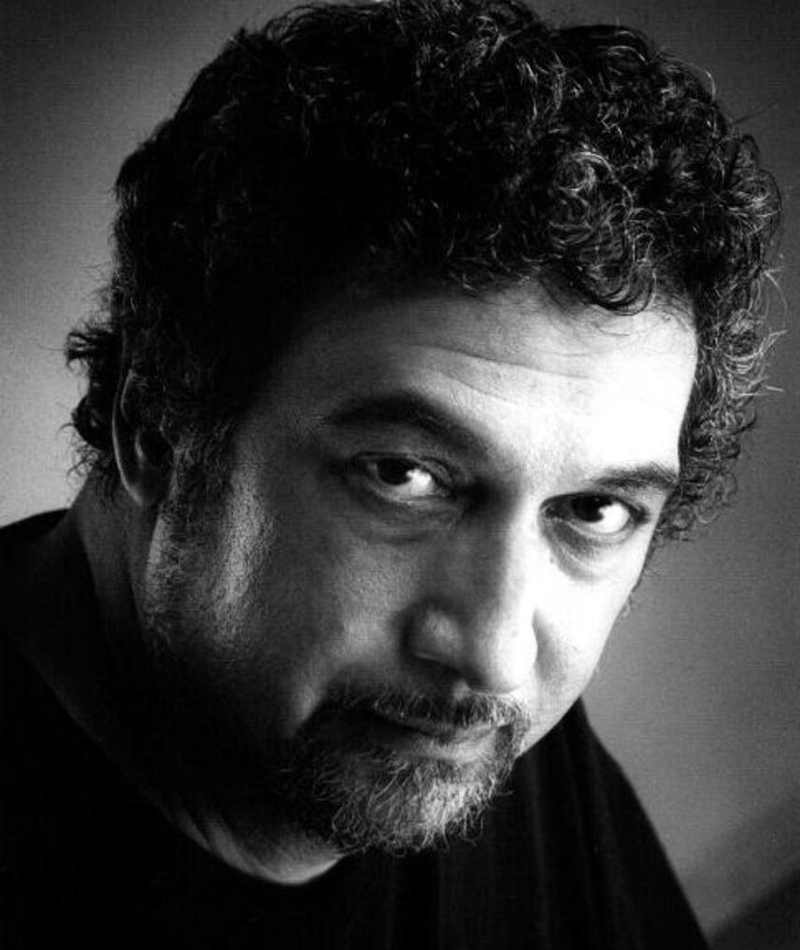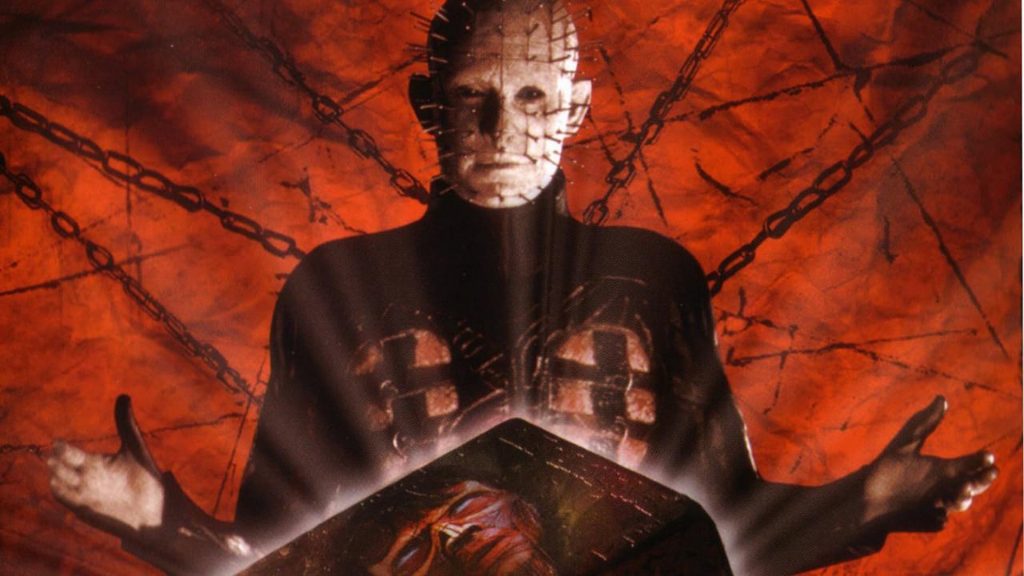“I have been writing screenplays since I was 13 years old. I have been writing for a long, long time, back before there even were screenwriting books,” said Neal Marshall Stevens, who has 45 writing credits on IMDb (and many more that are unlisted).
“I think I bought an old Star Trek episode, which was totally inappropriate as a screenwriting guide,” he joked. “You could order screenplays back then, but they were written after the fact so they were not at all useful.”
Stevens is a graduate of NYU and began his career as a consultant and story editor for Laurel Entertainment. One of his first jobs included the pilot to the syndicated series Monsters. The veteran writer is also known for working on The Vernon Johns Story, Precious Victims, Stephen King’s The Stand, the Puppetmaster series, Hellraiser: Deader, and Dark Castle’s remake of Thirteen Ghosts.

Neal Marshall Stevens
“I wrote up all these pitches for Monsters and I had another idea that wasn’t written down, but I was in there so I pitched that idea. That was my first sale and it turned out to be the premiere episode.” After the surprising death of the original showrunner, Stevens was put in charge of the series where he picked plots and episodic writers for the next two seasons.
Writing $3,000 Features
After Laurel Entertainment was split apart by a merger, Stevens found himself in a job writing $3,000 full feature scripts. “They paid a lot more to write an episode of Monsters, so it didn’t seem like a good deal, but my insurance ran out so I went back and did it.”
To make this agreement somewhat work in his favor, Stevens said he would not write multiple passes like he did with other development deals. Instead, he would require $3,000 per pass. Re-writes would be pay-as-you-go.
“I started writing features for Full Moon and by the time I was done, I’d written well over 50 features in the course of the next few years. They were like 85-page features and they didn’t do a lot of rewriting.”
Somewhat like novel ghostwriting, Stevens is actually listed under pen names like Benjamin Carr and Roger Barron. “By now, I must have written 75 – 80 things for Full Moon. They’ve shot maybe 60 – 65 of them.”
“The business got more marginal and cheaper, so there was a huge home market that disappeared. Streaming is much less lucrative, so the movies have gotten shorter and shooting schedules are cheaper.”
During the little breaks he did have, he would write other projects. “I could write a feature in about a week, but I had to break out in other things. I was fine with writing but not marketing, so I managed to convince my wife to help with cold calling. She used her maiden name and became my manager.”
The Hellraiser: Deader Screenplay
“I had written a horror film called Deader and my wife managed to send that to someone who responded to it.” Eventually, the spec got to Dimension and Bob Weinstein read it on a Friday and scheduled a meeting for Monday.
In many ways, this was Stevens’ big break. “We got a deal for half a million dollars right then. At the time, we didn’t even have an agent. We had a lawyer, but that was it. Judy made the deal and that was it.”

Hellraiser: Deader
Eventually the writer got a development deal and the movie was turned into a Hellraiser sequel. “It made my career even though the ultimate outcome of the project wasn’t ideal. From that, I got Thirteen Ghosts and my career was made.”
Essentially, Stevens found quality through quantity. He had to write frequently to make ends meet and after enough screenplays, he hit on something that paid off big. “The business has moved much more into writer-directors. I think that’s what they’re looking for: that united package. They don’t want to take a script and go looking for a director. Whatever that source is, they want you to come with that united vision already together.”
How to Be Prolific
“That prolific nature began at Laurel because we had to turn out whole seasons of Monsters at a terrific schedule. It’s tiny stories with limited budgets and limited schedules and limited budgets, so it’s kind of a steamroller process.”
At the time, they actually had two productions – one East and one West Coast – and then they had to assign scripts logistically. “If scripts weren’t coming in, I had to pull them back and do the rewriting myself because it had to go.”
A script that wasn’t ready either had to be assigned to a writer or Stevens would take on that rewrite himself. “It had to get where it needed to be. There were writers who were good at some things, like structure, so I knew the dialogue was going to be terrible. So I could fix that.”
“Certain writers, you knew you could rely on, so when schedules were tight, you knew those writers could give you something that was good to go.” As for others, Stevens often took on the excess work himself.
One particular writer, a former stage writer, always had trouble with pacing. “They’re much more long-winded. The pacing was always too long. The dialogue went on forever. It never worked. I knew I was going to have to rewrite the whole thing.”
“When you’re re-writing your own story for the screen, you have to have the flexibility that you’re going to leave a lot of it behind and take it back to first principles. Start again and write it back it up.”
When to Chase Ideas
“In Monsters, you only had a page or two for the treatment. It was always building to a twist. If you didn’t have that, you didn’t have an idea. It had to run to a twist or turn, or else it wasn’t a Monsters episode. You needed that sting in the tail, that payoff.”
The writers had an open door policy which meant they got dozens and dozens of screenplays. “We got a bunch of monsters-under-the-bed stories. We did that in Tales from the Dark Side, so most of it was amateur stuff.”

The interns helped filter the good from the bad. “If you read enough stuff that’s really bad, you don’t have to read a lot to move on. You develop a kind of instinct, not only for other people’s ideas, but for your own ideas. It’s what I call an idea that is fruitful.”
To elaborate on this idea, Stevens said he will “scratch away” to see what’s beneath the surface. “It’s not really an idea. It’s not really a premise. It’s not fruitful in the sense that it opens to a lot of ideas and a lot of possibilities.”
One example came from the true story that your fingernails stop growing for a moment once you’re sick. The story would follow the doctor in a small town who notices this small interruption in fingernails in the small town.
“A certain number of weeks or months ago, something odd happened in the town. I thought that was an interesting idea, but then I realized the real premise wasn’t that, it was whatever it was that caused that thing to happen.”
Basically, when he went deeper, he realized the cause would be a trope. “It would be something in the water or space aliens or some government thing or something we’ve seen hundreds of times before. I needed to think of something as interesting as the fingernail thing.”
“That, for me, is the test: does the idea open up into other intriguing ideas.” The story that sold was called The Fever Man, a shaman who pulls disease from someone with a magic stone and then physically fights this living thing. “It has its own mythology, so the whole thing just seemed fully laid out. It struck me as a fruitful idea.”
A Sense of Dread
The screenwriter’s new book, A Sense of Dread: Getting Under the Skin of Horror Screenwriting is broken up into three main sections:
- A detailed examination of fear.
- The roots of human fear as displayed on the screen.
- Using these principles to create the horror writer’s tool box.
Today, horror screenwriters believe modern horror pieces are perhaps more emotionally deep than they were in previous decades. “Movies like Hereditary and The Lighthouse and The Witch are excellent movies in themselves, but the way horror was moved into mainstream movies is really interesting,” said Neal.
“If you think about horror tropes in movies like 1917, which has some of the most terrifying sequences – the foray across no man’s land and rushing through the bunker and the rats – are incredibly terrifying. The construction and structure and execution owes a tremendous amount of understanding to horror and dread.”
As for writerly advice, Stevens said writing is all he would ever do. “Sometimes it’s paid me well, sometimes not so well, but I’ve always managed to earn my living at it. These days, it’s harder. The development money is harder to get. The development field has really drawn back. It’s not what it used to be. A lot of writers these days need other ways to keep themselves alive. I was fortunate to catch the last wave where I could just be a writer.”
Logistics aside, Stevens is always chasing the next great idea. “When you suggest an idea to someone and they get excited and it’s because you’re expressing ideas and possibilities to them. They’re excited because they see the possibilities. Surface ideas die on the vine. Start with the premise that is going to be fruitful.”
This interview has been condensed. Listen to the full audio version here.

